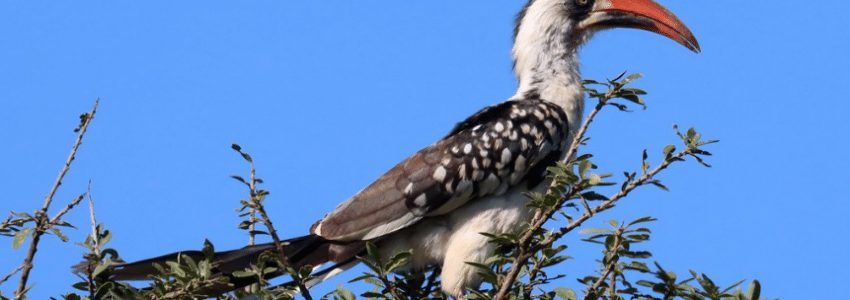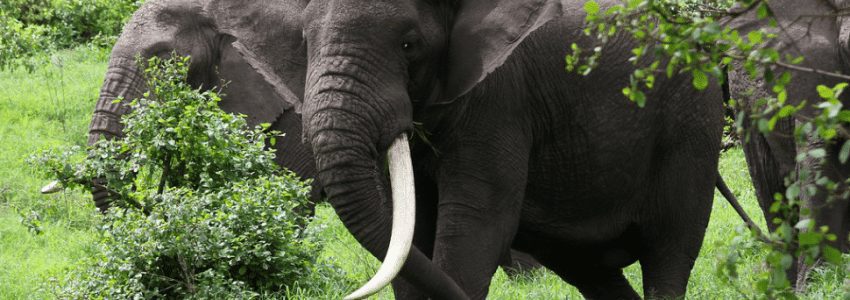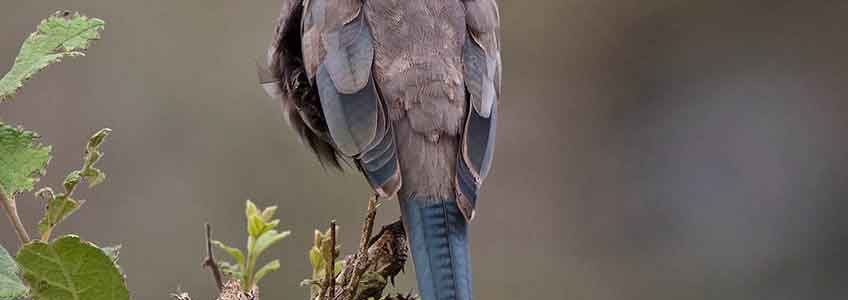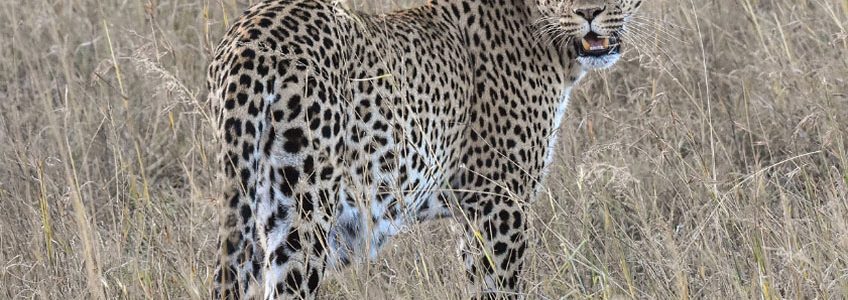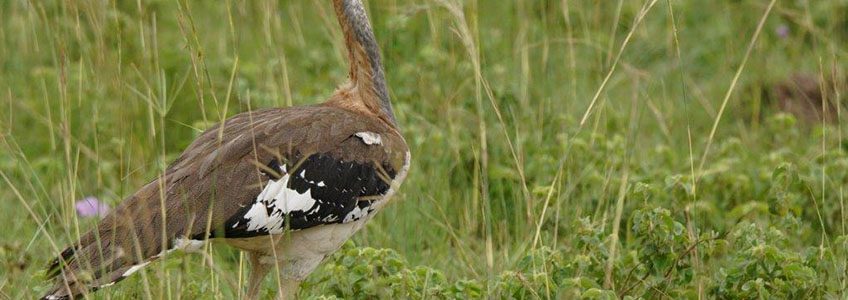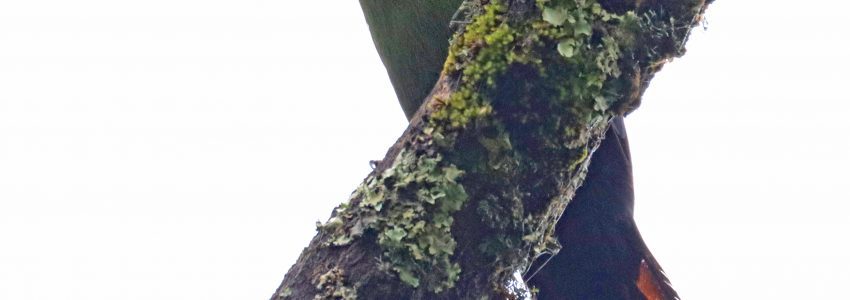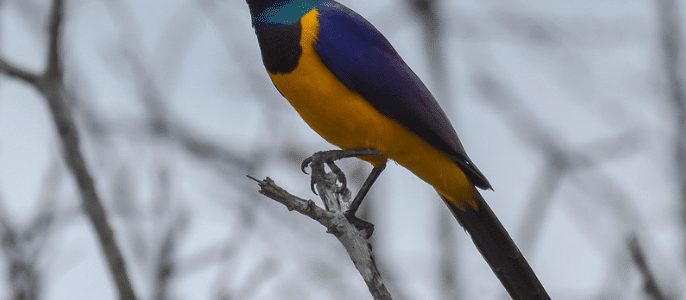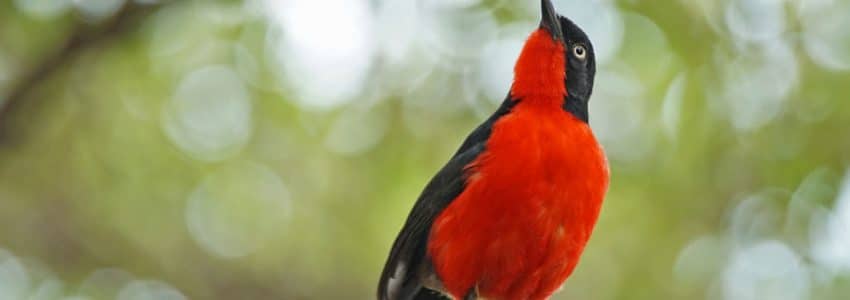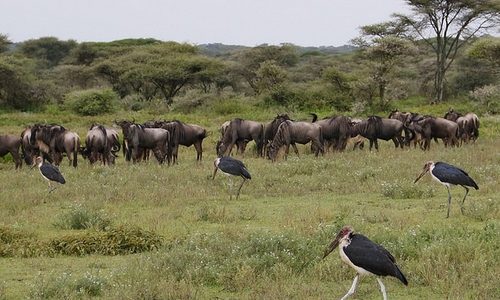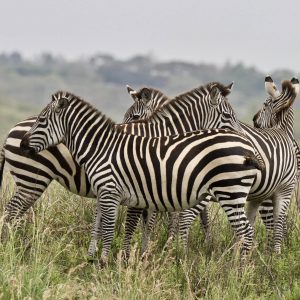Cross Country Birding and Wildlife, meets the Target! Read more
Tanzania Safaris
The Wild and Remote South and the Miombo woodland Birding! Read more
Birding the North on Borrowed Time! Read more
The Standard and Popular North! Read more
Birding the Westerly Miombo Woodland Specialties, Tanzanian Southern Highlands Endemics and the remote Lake Tanganyika’s off the beaten track Read more
Targets the Beesley`s Lark and the Spot Throat! Read more
For the Near Endemics and Specialties! Read more
Birding and Wildlife Extravaganza! Read more
9 Days Tanzania Wildlife & Nature Tour
Day 1: On arrival into Tanzania, you are met by our Tanzania birding driver guide at the airport in Kilimanjaro. You then begin the transfer in a custom built safari vehicle through verdant landscape to the Arusha. Depending on time of arrival, you will have couple of stops along the way to spot some bird species before heading to the overnight Hotel in Arusha. Following a short birding trip around the property, the birdguide will go through the itinerary one more time on the final briefing prior to the next day’s program. Birding in the Arusha environs of the hotel introduces: Variable and Scarlet-chested Sunbird, Common Bulbul, Brown-crowned Tchagra, Mourning ,Namaqua Dove, Spotted Eagle-owl, African Black-headed Oriole, Red-headed Weaver, Baglafecht Weaver, White-eared Barbet, Blackcap, Waller’s Starling, African Green Pigeon, Crowned Hornbill.
Overnight at Korona Villa
Day 2: Breakfast at about 8:00am,walk around the Lodge gardens and depart for Arusha National Park with your Picnic boxes for Lunch. You have a full day exploring the Ngurodoto Crater, the famous Momella Crater Lakes as well as clear views of Mount Meru (4500m above sea level), all Big Game including Herds of Buffaloes, Masai Giraffes, Black and white colobus monkeys… will be viewed in their natural habitat with the exception of Rhinos and Lions. Bird checklist of Arusha National park features; Trilling Cisticola, Moustached Grass-Warbler, Mosque Swallow, Red-rumped swallow, Lesser Striped swallow, African Harrier-hawk, Cabanis’s Greenbul, Short-tailed Batis, Horus Swift, Silvery-cheeked Hornbill, Hartlaub’s Turaco, Bar-tailed Trogon, Brown Woodland Warbler, Eastern Mountain Greenbul, White-starred robin and many more. Return to Korona Villa for Dinner and Overnight.
Day 3: An early Breakfast will be taken, and a picnic Lunch will be carried, getting ready for a long drive to the Serengeti plains. En route you will drive through the Masai country side passed the Rift valley escarpment where you will stop for panoramic views of the spectacular Lake Manyara escarpment, continue through the Agricultural township of Karatu into the Ngorongoro Highlands then to Olduvai gorge where you will un-pack your Lunches while listening to Lectures from a resident Archaeologist at the Olduvai gorge – re discovering the fossils of the early man, you will also have chance to visit the Paleontology Museum where the Australopithecus Bosei skeleton was discovered dating million years ago
Continue into the Serengeti Plains with very brief game viewing as it will be approaching sun set. Birds to look out for this day include: Buff-bellied Warbler, Red-faced Crombecs, Winding Cisticolas, Tawny-flanked Prinias, Dideric Cuckoos, White-browed Coucals, Grey-headed Kingfishers, Blue-cheeked Bee-eaters, Cardinal Woodpecker, Black-headed Gonolek, Rufous Chatterers chested Sunbirds, Isabelline Shrike,Angola Swallow, Black-billed Barbet, Pearl-spotted Owlet, Brubru, Black-backecd Puffback, Mariqua Sunbird, Karamoja Apalis, Plantain-eater, Southern Ground Hornbill, Bateleur, Harrier-hawk and Little Sparrow hawk.
Check in at Katikati Tented Camp for Dinner and Overnight.
Day 4: Early rise to catch up with the game as hundreds of Mammals rise out of their dens to begin a typical jungle day,-the Serengeti is famous for her annual Million herds of Wildebeests migrating within the Serengeti –Masai Mara eco –system; Grazers ,Browsers and Carnivores will be seen sharing this great plains in harmony, game viewing and return to the Lodge for your breakfast.
After Breakfast, you will join in for the official Full day game viewing, returning to the Lodge for a hot Lunch. After Lunch you may have the option of either staying in for a nap and go for a late afternoon game viewing once again or relax till next day. Count down your day’s spot list, which may include a handful of Lion Prides, Thomson and Grant Gazelles, Dikdik and other Cats such as the Caracal, Cheetah and Leopard.
Birding in the Serengeti introduces: Common Sandpiper, Black Crakes, Montagu’s Harrier, Black-shouldered Kite, Black-chested Snake-Eagle, White-bellied Bustard, dainty Temminck’s Courser, Rueppel’s Long-tailed Starling, White-headed Buffalo-Weavers, Rufous-tailed Weaver, Lesser Spotted Eagle, Pallid Harrier, Dark Chanting Goshawk, Coqui Francolin, Isabelline Wheatear, Yellow-billed Stork, Klaas’s Cuckoo, Usambiro Barbet, Scarlet-chested Sunbird.
Enjoy your Dinner and overnight at Katikati Camp.
Day 5: Morning at Leisure, Breakfast at own pace, depart with picnic Lunches, to have the last of the Serengeti Plains- taking the last pictures of the Serengeti with chances of catching up with the Kilpspringers and other Antelope species such as Topi, Eland, Water bucks. Enroute to Ngorongoro are Maasai local home stead (locally known as the Maasai Boma, the Maasai will welcome you to visit their home for a “fee”) Rest of the evening relaxing at the Ngorongoro Sopa Lodge balcony with taking views of the crater floor.
Look out for African HillBabbler, Thick-billed Seedeater, Brown Woodland Warbler and Montane White-eyes, Cinnamon Bracken Warbler, Bronze and Green-headed sunbirds, Black-winged Bishop, Holub’s Golden Weaver, Emerald-spotted Wood Dove, White-necked Raven, White-tailed Blue Flycatcher, Black-throated Wattle-eye, Chinspot Batis, Gray-capped and Brown Woodland Warblers, Abyssinian (Olive) Thrush, Brown-headed Apalis, Tambourine Dove, Mountain Wagtail, African Paradise-Flycatcher, Cinnamon-chested Bee-eater and Collared Sunbird, Sharpe’s Starling, Purple-throated and Grey Cuckoo-shrikes, Black-fronted Bushshrike, Narina Trogon, Red-capped Robin-chat, Grey-headed Nigrita, Spectacled Weaver, Moustached Tinkerbird, White-tailed Blue Flycatcher, African Hill Babblers and Montane Nightjar. Dinner and Overnight at Rhino Lodge
Day 6: After the 7:30Am Breakfast, you will descend the crater walls onto the crater floor which has a radius of about 265sqKm. The Crater is uniquely dotted with watering holes and shelters about 30,000 Mammals including the White bearded Gnus, Cheetah and Tanzania’s only Black Rhinos.” This is the eighth wonder of the world and the world’s only remaining memories of the “garden of Eden” better described as Noah’s Ark.. After the excitement at the Crater floor, you will ascend the Crater walls to your Lodge. Birds to look out for this day include; Cape Rook, Kestrel, Chestnut-bellied Sandgrouse, Yellow-throated Sandgrouse, Rufous-crowned Roller, White-throated Bee-eater, Singing Cisticola, Wailing Cisticola, Yellow Bishop, Schalow’s Wheatear, Northern Anteater-Chat, Yellow-fronted canary, Steppe Buzzard, Abdim’s Stork, Rueppell’s Robin-chat, Spur-winged Goose, Saddle-billed Stork, Mountain Yellow Warbler, Hunter’s Cisticola, Eastern Mountain Greenbul, Streaky Seedeater, Cape Robin-chat, Kenrick’s Starling,OlivePigeon, Schalow’s Turaco, Tropical Boubou, Dusky flycatcher, White-eyed Slaty-Flycatcher, Cinnamon-chested Bee-eater. Night at Country Lodge.
Day 7: Depart the Karatu area after breakfast, drive into the jungles of Lake Manyara, Lake Manyara is famous for her tree climbing Lions, large schools of Hippos at the Hippo pool and the Maji moto hot springs. Birding in the Manyara features; Black-crowned Tchagra, Silvery-cheeked Hornbill, Collared Palm-Thrush, Purple-crested Turaco, Yellow-bellied Greenbul, White-backed and Rueppell’s vultures, African Crowned Eagle, African Hawk-eagle, Black Goshawk, African Marsh Harrier, African Fish-Eagle, Bateleur, Common Buzzard, Verreaux’s Eagle-owl,Sulphur-breasted Bush-shrike, Yellow-billed Storks, Great White Pelican, Pink-backed Pelicans, Sacred Ibis, African Spoonbill, Squacco Heron, Purple Heron, Black Heron, White-faced Whistling Duck, Black-winged Stilt, Marsh Sandpiper, Little Stint and Collared Pratincole.
You will then take your picnic Lunch at one of the many Picnic sites set aside by the park Authorities and then continue exploring the Lake Manyara jungles, where a good list of wildlife will be added to your previous record. Drive out of the park boundaries in the evening into E Unoto Retreat Tanzania’s only true 5 Star Luxury Lodge set in a remote Maasai Country where bird walks can be arranged.
Day 8: We will have an optional Pre breakfast bird walk around the Gibba Farm, after breakfast you will have the option to go out game viewing full day back in the Manyara Jungles or just relax at your Balcony where birding opportunities are superb. Look out for Water Thick-knee,Long-toed plover, Blacksmith plover ,Spur-winged Plovers, African Jacana, European Bee-eaters, African Swamp hen, Red-and-Yellow Barbet, Mocking Cliff Chat, Bearded Woodpecker, Scimitarbill, Crowned Hornbill, African Black-headed Oriole, Collared Palm Thrush White-headed Barbet, Southern Citril, Spot-flanked Barbet, African Green Pigeon, Red-headed Weaver, Eastern Nicator
You can then later join in a walk exploring the local surroundings where again you will have further chances of birding for waders and a mix of dry country species as well as meeting up with the local people. Later, dinner and overnight at your Lodge.
Day 9: Leisurely Breakfast, Lunch at the Lodge and drive to Arusha to catch a PM flight home or transfer to Nairobi.
END OF SERVICES
Amboseli Reserve
Location Kenya
Area 392 km²
Established 1974 as a national park (as a reserve in1906)
Visitors 120,000 (estimated) (in 2006)
Governing body Kenya Wildlife Services, Olkejuado County Council and the Maasai community

Amboseli National Park, formerly Maasai Amboseli Game Reserve is in Kajiado District, Rift Valley Province in Kenya. The park is 390 km² (150 mi2) in size at the core of an 8,000 km² (3,000 mi2) ecosystem that spreads across the Kenya-Tanzania border.
The local people are mainly Maasai, but people from other parts of the country have settled there attracted by the successful tourist-driven economy and intensive agriculture along the system of swamps that makes this low-rainfall area (average 350 mm (14 in) one of the best widlife-viewing experiences in the world. The park protects two of the five main swamps, and includes a dried-up Pleistocene lake and semi-arid vegetation.
260 km (160 mi) from the capital city Nairobi, Amboseli National Park is the third most visited game area in Kenya after Maasai Mara National Reserve and Nakuru National Park and the visit can easily be done in a weekend.
In 1883, Joseph Thompson was the first European to penetrate the feared Maasai region known as Empusel (meaning ‘salty, dusty place’ in Maa). He, too, was astonished by the fantastic array of wildlife and the contrast between the arid areas of the dry-lake bed and the oasis of the swamps, a contrast that persists today.

Amboseli was set aside as the ‘Southern Reserve’ for Maasai in 1906 but returned to local control as a Game Reserve in 1948. Gazetted a National Park in 1974 in order to protect the core this unique ecosystem, it was declared a UNESCO Man and the Biosphere Reserve in 1991. The park earned $ 3.5 m (€ 2.9 m) in 2005. On September 29, 2005, Kenyan President Mwai Kibaki declared that control of the park should pass from the Kenya Wildlife Service to the Olkejuado County Council and the Maasai tribe.
Some observers saw this as a political favor in advance of a vote on a new Kenyan constitution: legal challenges are currently in court. The degazetting would divert park admission fees directly to the County Council with questionable spread of benefits to the Maasai immediately surrounding the park. It would set an unfortunate precedent that could jeopardise the status of other parks in Kenya.
The park is famous for being the best place in Africa to get close to free-ranging elephants. Other attractions of the park include opportunities to meet Maasai and spectacular views of Kilimanjaro, the highest free-standing mountain in the world.
There is a small airport in Amboseli, the Amboseli Airport (HKAM).

